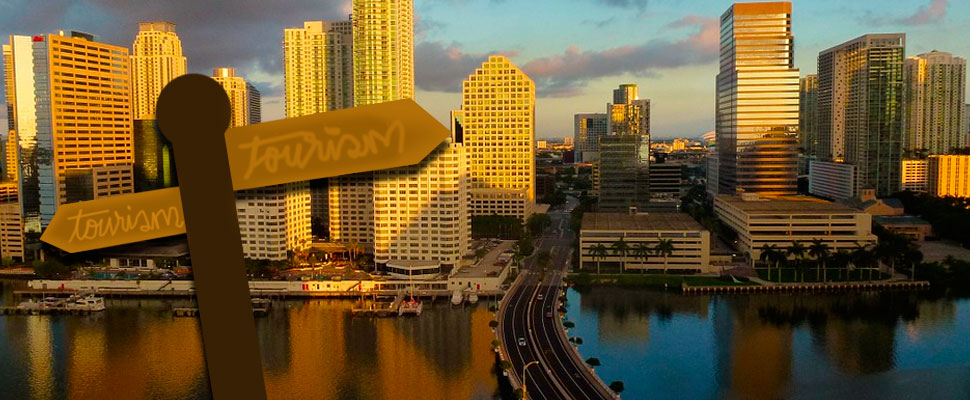Miami’s cultural tourism: an interview with John Copeland
Listen this article
Dance and music, arts and gastronomy, these are some Miami's cultural offers that make it a great city to visit, according to its Cultural Tourism Director

Cultural initiatives have proven a great asset for cities around the world to make their fame grow, and to improve their tourism platforms. We all know examples such as New York’s Broadway shows or the Louvre museum in Paris, or even the great Rennaissance paintings in some of Rome’s churchs.
Leer en español: Turismo cultural de Miami: una entrevista con John Copeland
Art, music, dance and gastronomy are some of the cultural fields in which some cities have focused in order to get the attention of the world, and to profit from it. One of the cities that has seen the great potential of cultural tourism is Miami.
LatinAmerican Post had the opportunity to talk with John Copeland, Miami’s cultural tourism Director from the Greater Miami Convention & Visitors Bureau (GMCVB). Here, an interview in which you’ll get to know Miami’s great cultural offer.
Also read: Cultural agenda: contemporary art events that you can't miss
LatinAmerican Post: What do you think about cultural initiatives, and why are they important not only for Miami but for the whole world?
John Copeland: So, in Miami we have a very young and vibrant cultural art scene. Many of our arts organizations are less than 15 years old, in fact many of them are less than 10 years old. As we have a growing, emerging art scene, we are finding that it’s a wonderful way for visitors to come and experience Miami, beyond the sun and the sand, but to have a rich cultural experience that will allow them to explore what the arts mean for Miami and allow Miami to share its voice with the rest of the world.
LP: Regarding cultural initiatives, you are kind of focused on gastronomy as a cultural initiative, can you tell us more about it?
JC: Absolutely. Gastronomy is very important to Miami. Miami has more than 16 million visitors per year, so it provides a great opportunity to share with them what we are doing in the culinary arts. And, as Miami is a hub of the Americas, we are heavily influenced by the cultures of the Caribbean, of South America, of Latin America, and all of those influences coalesce in our culinary scene, where we have incredible restaurants, you know, Indian restaurants, Caribbean restaurants, South American restaurants… Colombian restaurants are very popular in Miami. So, it’s a great opportunity for all of the immigrants of Miami, everybody from around the world that’s visiting Miami to get a real taste of our region.
LP: Taking into account that multiculturality is such an important aspect of the United States, and that the current president is not so much into multiculturality, what can you tell us about it and about some of your programs like Miami Temptation or Art Basel?
JC: Well, Miami is very much a sort of the epitome of a multicultural city in America. It’s very rare to find a native from Miami in Miami. Everybody is coming to Miami from other parts of the world, so it becomes a very natural melting pot for our city. Because of that, we have different cultures melting together and overlapping in their different styles and offerings. So, one of the great programs that we built to enhance this is the Miami Temptation programs, and most specifically, in terms of gastronomy, is the Miami Spice Months. During the months of August and September, hundreds of restaurants around Miami offer special dining options: lunch is only $23, and dinner is only $39. So, it allows people to visit these restaurants that they may not otherwise be able to afford, because some of the restaurants are very expensive. Also, it levels the plain field that now you can get a taste of all this varieties and cultures and chef’s menus for a very reasonable price. And it allows visitors, tourist and natives alike to experience the restaurants. So, it’s a great to get everybody out to experience Miami.
LP: What do you think about musical cultural initiatives in Miami?
JC: Lot of great things are happening in Miami. We’ve got some wonderful, you know, as I mentioned the melting pot as we have so many influences from other parts of world coming to Miami to share their culture, what we are starting to see is an emerging Miami Sound, just as we had back in the 80’s with stuff like the Miami Sound Machine. Even today that evolution continues. Some of the great organizations that we have now is a new orchestra called Nu Deco Ensemble, that blends classical music with Hip Hop, with alternative rock, with EDM, into a really unique sound. So, they have just really come on the scene in the past 5 years and they are performing all over our city a variety of different events and activities and developing a real following.
LP: Is there a way to join the gastronomic cultural offer with the cultural one?
JC: Absolutely. In fact, this past weekend was the South Beach Wine and Food Festival, it was a five-day food and wine festival held in Miami. More than 60,000 people attended this event, there were over 100 different events surrounding the festival. They had on stage Nu Deco Ensemble perform at one of the events on the beach, so we were to feature a lot of Miami artist throughout the festival and the stages. So, as people are doing wine and food tastings, they are also experiencing and hearing music and sounds of Miami.
LP: Besides gastronomy and music, what do you think are other cultural activities that may have a great impact on Miami’s cultural tourism?
JC: We have an amazing dance scene. The Miami City Ballet is one of the world’s premiered dance companies and they are based right on Miami Beach, and they feature some of the world’s greatest dancers, many of them from Latin and South America and the Caribbean. Miami City Ballet toured regularly to New York City and Europe, so we are very proud of the quality of their dance company. We also have a company called Braz Danced, that is very much based on Brazilian traditional dancing; there’s an organization called Dance Now, which is a very progressive contemporary dance company. But, you know, Miami is a place of beautiful people with beautiful bodies, very healthy community, so dance is a very important part of our culture, not only on our night clubs but also on our stages in our performing arts centers.
LatinAmerican Post | Juan Gabriel Bocanegra
Copy edited by Juliana Suárez





